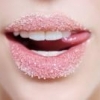Best sunscreen summer 2017
 Leni
03 Feb 2017
Leni
03 Feb 2017
I remember all these sunscreen discussions years back here. What is the general consensus currently: which sunsceen filters come out 'best' also protecting against long wave-length UVA.
I've used LRP with Mexoplex filters for years, but the endocrine disruptors cause me some concern. On the other hand I've tried ZnO sunblocks and they made me look like the Phantom of the Opera. I really don't want to try that again, and I've always felt the sunscreen of La Roche Posay gave me better protection, also since I could use a lot of it without looking too much like a white clown. But perhaps there are better sunscreen filters on the market nowadays?
 happy lemon
03 Feb 2017
happy lemon
03 Feb 2017
Tinosorb S & Tinosorb M.
Last week, I tried SVR50 + ULTRA MAX & SVR Sebiaclear Crème SPF50 in a drug store; both of them were not greasy. I will ask for sample, if there is any.
 Heyman
04 Feb 2017
Heyman
04 Feb 2017
ZnO has protection even into visible light, same for Tinosorb M, but both will result in some white cast, if protection is broad enough to reach into visible light it will be visible. Also, while ZnO has very broad protection, the actual protection factor is not very high. What I would do is add some antioxidants (e.g. ceferulic) to your sunscreen which should add some protection for UVA without being aesthetically unpleasant.
 Cremedevanille
13 Feb 2017
Cremedevanille
13 Feb 2017
Tinosorb S & Tinosorb M.
Last week, I tried SVR50 + ULTRA MAX & SVR Sebiaclear Crème SPF50 in a drug store; both of them were not greasy. I will ask for sample, if there is any.
What are the ingredients of these screens Happy Lemon? I can't find anything on line. EDIT: Sorry, managed to find it.
I am currently using Bioderma Photoderm screens and am investigating LRP, hopefully I'll be able to find one that isn't horribly sticky. Reapplication is an issue (on the rare occasions I am actually outdoors for long) for me as well. My skin tolerates one application but re-application every two hours starts to make it feel pretty sticky and ghastly and, consequently, I can break out. I remain to be confused why why LRP screens need re-application every two hours if they are theoretically meant to protect for 6+ hours and are said to be so stable?
What is the general consensus these days guys? I trawled through the old sunscreen threads but it gets a bit mind blowing. Is CE Ferulic plus strong antiox serums under zinc oxide screens such as Burnout going to give us as good protection as the European chemical screens?
What a bummer Eva Victoria's screen never came to light, she seems to have fallen off the map. I fear it is a write off :(
Edited by Cremedevanille, 13 February 2017 - 05:47 PM.
 Keizo
16 Feb 2017
Keizo
16 Feb 2017
ZnO has protection even into visible light, same for Tinosorb M, but both will result in some white cast, if protection is broad enough to reach into visible light it will be visible. Also, while ZnO has very broad protection, the actual protection factor is not very high. What I would do is add some antioxidants (e.g. ceferulic) to your sunscreen which should add some protection for UVA without being aesthetically unpleasant.
One thing you can try to do is layer the very white sunscreen with a foundation (with or without SPF) that is darker than your skin, although that will probably require some experimenting. foundation first, sunscreen on top most likely.
I'm guessing there are also various other cosmetic products with pigmentation you can try to blend in with the sunscreen. But I also presume there are various sunscreens out there that are good but have added pigment in them
Personally I find the white look enjoyable of the Zinc/titanium sunscreens (I have used one from Paulas Choice with an SPF of 30 that is very light, skin balancing ultra sheer something), but I use them moderately so the actual protection is probably nowhere great and I don't look completely like a ghost, meanwhile I also try to avoid the sun despite being outside quite a bit in summer, and I'm very white and basically can't get brown.
Edited by Keizo, 16 February 2017 - 06:28 PM.
 happy lemon
17 Feb 2017
happy lemon
17 Feb 2017
The zinc oxide of Paula's Choice is of nano one. According to EWG, nano Zinc Oxide does not provide much UVA protection.
http://www.ewg.org/2...s-in-sunscreen/
http://www.paulascho...nse-spf-30.html
Aqua, Cyclopentasiloxane (silicone slip agent), Zinc Oxide (Nano, 13%, broad spectrum sunscreen agent)......
 The Beauty of Peace
23 Feb 2017
The Beauty of Peace
23 Feb 2017
Japanese sunblocks use a combination of physical and chemical filters (uvinul T, Uvinul A, Tinosorb M, Tinosorb S, zinc oxide, etc.). They also came up with a new UV filter stabilizer called RonaCare AP, which is an antioxidant that stays in your skin for a long time. Many Japanese sunblocks contain alcohol, however. Some don't.
European sunblocks still rule, but most of them are greasy:(
 bosharpe
16 Mar 2017
bosharpe
16 Mar 2017
I really like Sunumbra Sunkids 40 spf.
No white cast plus they do a 20% discount on their website.
Ingredients:
 The Beauty of Peace
17 Mar 2017
The Beauty of Peace
17 Mar 2017
I really like Sunumbra Sunkids 40 spf.
baobab seed oil - 100% Organic certification
Is it not greasy?!
 TheFountain
11 Apr 2017
TheFountain
11 Apr 2017
I'm still using Burnout Face and Body. I have not found (or tried) any other sunscreen in the past 3 years that has the consistency to where it disappears so gracefully into my skin this one does.
And it seems to be working relatively well.
I would however like to add an antioxidant moisturizer under it. But which?
 ZuoCi
03 May 2017
ZuoCi
03 May 2017
It has
Zinc Oxide
Titanium Dioxide
Tinosorb S
Uvinal A
Octinoxate
Like many Asian sunscreens, is also has alcohol, as Beauty of Peace mentioned.
It does not have:
avobenzone
oxybenzone
It has the the maximum UVA protection rating (Pa++++). The only one under $30 I can find.
I'll explain the Japanese PA system briefly, by comparing it to the SPF system. Something that is SPF 10, means you can be out in the sun for 10x as long before experiencing a burn(supposedly). So it's blocking about 90% of the UVB rays. Something that is SPF 50 is blocking 98%. The PA is basically like this, but for UVA.
The PA system is 2^+
PA+ means it's blocking about 50-75% of UVA spectrum.
PA++ blocks 75-87%
PA+++ blocks 87-93%
PA++++ blocks 94+%
Most American sunscreens would get a PA+-Pa++ rating.

 TheFountain
08 May 2017
TheFountain
08 May 2017
It has
Zinc Oxide
Titanium Dioxide
Tinosorb S
Uvinal A
Octinoxate
Like many Asian sunscreens, is also has alcohol, as Beauty of Peace mentioned.
It does not have:
avobenzone
oxybenzone
It has the the maximum UVA protection rating (Pa++++). The only one under $30 I can find.
I'll explain the Japanese PA system briefly, by comparing it to the SPF system. Something that is SPF 10, means you can be out in the sun for 10x as long before experiencing a burn(supposedly). So it's blocking about 90% of the UVB rays. Something that is SPF 50 is blocking 98%. The PA is basically like this, but for UVA.
The PA system is 2^+
PA+ means it's blocking about 50-75% of UVA spectrum.
PA++ blocks 75-87%
PA+++ blocks 87-93%
PA++++ blocks 94+%
Most American sunscreens would get a PA+-Pa++ rating.
Man look at all that junk in there.
 fntms
08 May 2017
fntms
08 May 2017
 Leni
24 Jul 2017
Leni
24 Jul 2017
- How good would you rate this product Uriage Bariésun XP Cream in terms of UVA protection (also higher end of the UVA-spectrum) as well as UVB protection?
- And in terms of stability of the sunscreen filters? I had seen mentioned somewhere that it doesn't contain Tinosorb S and thus the used sunscreen filters are not stabilized well - any thoughts on this?
- How would it compare to the (Anthelios) Mexoplex filters in terms of UVA-protection and stability of the sunscreen? I've used Anthelios for ages and I'm afraid to use anything else since it seems to offer quite good protection but I DREAD the awful way it looks on my face and would love to find something else.
Uriage Bariésun XP cream SP50 ingredients:
Formule INCI: dicaprylyl carbonate, aqua, titanium dioxide, zinc oxide, diethylamino hydroxybenzoyl hexyl benzoate, ethylhexyl triazone, methylene bis-benzotriazoyl tetramethylbutylphenol, peg-30 dipolyhydroxystearate, dimethicone, hydrogenated polydecene, polyglyceryl-3diisostearaten glkycerin, alumina, stearic acid, decyl glucoside, magnesium sulfate, triethoxycapylysilane, phenoxyethanol, hydogenated vegetable oil, bezoic acid, cera alba, tetrasodium edta, tocopheryl acetate, ci 77492, ci 77491, disteardimonium hectorite, trehalose, popylene glycol, xanthan gum ctric acid, popylene carbonate, ascorbyl tetraisopalmitate.
Sorry if this seems like a double post: I wanted to remove the post above since I accidentally discussed the wrong sunscreen, but somehow I can't remove it(??)
I hid the erromeous post for you - Max
Edited by maxwatt, 24 July 2017 - 01:38 AM.
 quarter
12 Aug 2017
quarter
12 Aug 2017
 Leni
19 Aug 2017
Leni
19 Aug 2017
What about the damaging effects of sun´s IR radiation exposure?
Yes exactly, as far as I'm aware we only have anti-oxidants to protect against IR radiation?
Any serum that comes especially recommended to use underneath our sunscreen?
 Oakman
19 Aug 2017
Oakman
19 Aug 2017
Perhaps this might interest those looking for UV protection. Some time ago I began a list of supplements that act as internal sunscreen and/or reduce the effects of UV on the exposed skin according to research I found online. The effects are often small, much less than topically applied sunscreen, but nonetheless, if you take these regularly, they should add up and decrease effects of exposure.
Where I am at 6000ft the UV is a 20 % increased over sea level, yet I find I get only a OK tan and no burn. I do try to be careful, wear UPF clothing and use (face/arms only) Coopertone Water Babies Pure & Simple 50 SPF Broad Spectrum. As I remember, Consumers Reports liked it's blocking ability and also that it contained only Octinoxate 7.5%, Octisalate 5%, and Zinc Oxide 14.5%. What's good for the baby should be good for me.
I take everything shown below except those with * after them. I figure every little bit helps, both internally and externally!
 Leni
28 Aug 2017
Leni
28 Aug 2017
Thanks Oakman, indeed there are some interesting supps to take that could offer some protection against UV-radiation. Personally I don't take loads of supps however, as certainly when it comes to 'anti-oxidants' study results have been so conflicting.
Not to mention there seem to be quite some quality issues with supplements. So I try to get most essential nutrients from my diet, and add some supps here and there that I can assume are of decent quality.
However: tiron, on the other hand seems very interesting of course.
 cuprous
29 Aug 2017
cuprous
29 Aug 2017
So is "mainstream" lotion like Neutrogena UltraShear ("with HelioPlex") considered vastly inferior, inferior, or acceptable?
 Nate-2004
25 Sep 2017
Nate-2004
25 Sep 2017
Whatever blocks both UVA *and* UVB is good. LifeExtension has a sunscreen that's perfect.
Edited by Nate-2004, 25 September 2017 - 03:57 AM.
 Iporuru
25 Sep 2017
Iporuru
25 Sep 2017
Whatever blocks both UVA *and* UVB is good. LifeExtension has a sunscreen that's perfect.
Do you mean Shade Factor SPF 30? It's good, but not perfect according to http://www.ewg.org/s...Lotion,_SPF_30/
 bosharpe
25 Sep 2017
bosharpe
25 Sep 2017
Uued Sunumbra Sunkids in the past which is highly rated and extremely good. Thinking of switching to Niod Survival 30 now and possibly The Ordinary suncare when it's released. I use to use Paula's Choice Resist 30 back a few years ago but it was nano ZO so I let it run out and didn't repurchase.
 Darryl
27 Sep 2017
Darryl
27 Sep 2017
My summer diet includes tomato-based sauce (drowning whole wheat pasta) or soup most days. I haven't had a burn in over a decade, even during all-day scuba diving, mostly exposed during mid-day surface intervals.
Ribaya-Mercado et al 1995. Skin lycopene is destroyed preferentially over beta-carotene during ultraviolet irradiation in humans. The Journal of nutrition, 125(7), p.1854.
Stahl et al, 2001. Dietary tomato paste protects against ultraviolet light–induced erythema in humans. The Journal of nutrition, 131(5), pp.1449-1451.\
Alaluf et al, 2002. Dietary carotenoids contribute to normal human skin color and UV photosensitivity. The Journal of nutrition, 132(3), pp.399-403.
Heinrich et al, 2003. Supplementation with β-carotene or a similar amount of mixed carotenoids protects humans from UV-induced erythema. The Journal of nutrition, 133(1), pp.98-101.
Aust et al, 2005. Supplementation with tomato-based products increases lycopene, phytofluene, and phytoene levels in human serum and protects against UV-light-induced erythema. International journal for vitamin and nutrition research, 75(1), pp.54-60.
Stahl et al, 2006. Lycopene-rich products and dietary photoprotection. Photochemical & Photobiological Sciences, 5(2), pp.238-242.
Levy and Sharoni, 2011. The inside‐out concept as complement to the use of topical sunscreen: the case for endogenous skin photoprotection from sunlight by natural dietary actives such as tomato carotenoids. Formulating, Packaging, and Marketing of Natural Cosmetic Products, pp.313-327.
Rizwan et al, 2011. Tomato paste rich in lycopene protects against cutaneous photodamage in humans in vivo: a randomized controlled trial. British Journal of Dermatology, 164(1), pp.154-162.
von Oppen-Bezalel et al, 2015. The photoprotective effects of a food supplement tomato powder rich in phytoene and phytofluene, the colorless carotenoids, a preliminary study. Global Dermatol., 2, pp.178-182.
Edited by Darryl, 27 September 2017 - 02:34 AM.
 remlon123
07 Oct 2017
remlon123
07 Oct 2017
Nothing wrong nano Zinc.
Z-Cote for instance protects uniformly up to 380nm, which is most of the UVA spectrum.
It's also easy to forgot indirect protection mechanisms in a sunscreens that greatly increase UV attenuation/absorption/reflection.
 happy lemon
08 Oct 2017
happy lemon
08 Oct 2017
Nothing wrong nano Zinc.
Z-Cote for instance protects uniformly up to 380nm, which is most of the UVA spectrum.
It's also easy to forgot indirect protection mechanisms in a sunscreens that greatly increase UV attenuation/absorption/reflection.
Here is what EWG said:
"......The smaller they are, the better the SPF protection and the worse the UVA protection......"
 remlon123
08 Oct 2017
remlon123
08 Oct 2017
Also, the EWG ignores ingredients that contribute to protection but aren’t considered actives.
 TheFountain
31 Oct 2017
TheFountain
31 Oct 2017
Whatever blocks both UVA *and* UVB is good. LifeExtension has a sunscreen that's perfect.
Do you mean Shade Factor SPF 30? It's good, but not perfect according to http://www.ewg.org/s...Lotion,_SPF_30/
It also has titanium dioxide as opposed to Zinc, like Burnout brand.
I find that to be vastly inferior.
 kurdishfella
27 Jun 2022
kurdishfella
27 Jun 2022
The best suncream is......... protective clothes.
some people feel being clothe less is better as you build tolerance overtime but start slowly.
 sponsored ad
sponsored ad


